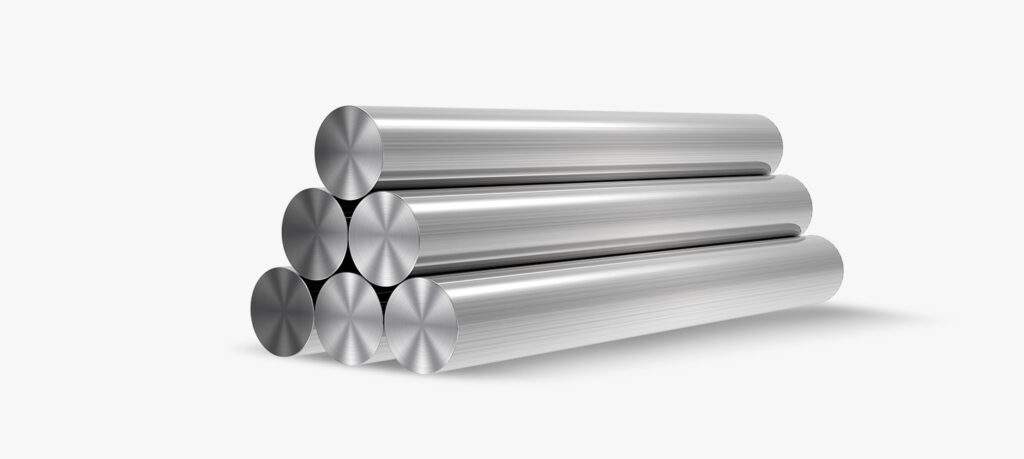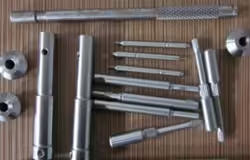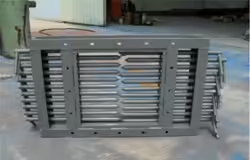
Understanding the Composition of Q235 Steel
Table of Contents
Introduction

Q235 steel is a widely used carbon structural steel in the construction and manufacturing industries, known for its versatility, durability, and cost-effectiveness. Its popularity stems from its excellent mechanical properties and adaptability for various applications, ranging from structural frameworks to machinery parts. To effectively utilize this material in projects, it’s essential to understand its composition, characteristics, and benefits.
This comprehensive guide explores the composition of Q235 steel, its mechanical properties, applications, and advantages. By delving into these aspects, you’ll gain insights into why Q235 steel is a preferred choice for diverse industries.
Henan Jiyuan Iron and Steel (Group) Co., Ltd. was founded in 1958. It has rich experience in production and research and development. It provides you with one-stop steel services and welcomes consultations from customers around the world.
What is Q235 Steel?
Defining Q235 Steel
Q235 steel is a carbon steel with a nominal carbon content of 0.2%, categorized as a low-carbon or mild steel. It belongs to the Chinese GB standard for carbon structural steel. Known for its high plasticity and weldability, it’s a versatile material suitable for a wide range of construction and engineering applications.
Variants of Q235 Steel
Q235 steel has different grades, including Q235A, Q235B, Q235C, and Q235D. These grades differ primarily in their quality requirements, such as impact resistance and chemical composition.
Chemical Composition of Q235 Steel
Understanding the chemical composition of Q235 steel is crucial for assessing its performance in various applications. Below is a detailed breakdown of its key components:
| Element | Composition (%) | Purpose |
|---|---|---|
| Carbon (C) | ≤ 0.22 | Enhances strength while maintaining ductility. |
| Silicon (Si) | ≤ 0.35 | Improves strength and elasticity. |
| Manganese (Mn) | ≤ 1.40 | Increases toughness and hardness. |
| Phosphorus (P) | ≤ 0.045 | Kept low to enhance corrosion resistance and ductility. |
| Sulfur (S) | ≤ 0.045 | Kept low to improve weldability and reduce brittleness. |
| Iron (Fe) | Balance | The primary component of the steel alloy. |
The controlled composition ensures that Q235 steel provides an excellent balance of strength, flexibility, and weldability.
Mechanical Properties of Q235 Steel

The mechanical properties of Q235 steel make it suitable for diverse applications. Below are the critical parameters:
Yield Strength
235 MPa (hence the designation “Q235”) ensures the material can withstand substantial loads before deforming permanently.
Tensile Strength
370–500 MPa provides durability and the ability to resist breaking under tension.
Elongation
≥26% for thicker plates and ≥20% for thinner plates indicates high plasticity, making Q235 steel easy to mold and shape.
Hardness
Q235 steel exhibits low hardness, typically suitable for applications requiring machining or welding.
Advantages of Using Q235 Steel
High Versatility
Q235 steel is used in a wide range of industries, from construction to manufacturing, due to its adaptable properties.
Excellent Weldability
The low carbon content of Q235 steel ensures minimal risk of cracking during welding, making it suitable for structural joints.
Cost-Effective
Q235 steel offers a cost-effective solution for projects without compromising on strength and durability.
Availability
As one of the most commonly used structural steels in China, Q235 steel is readily available, ensuring minimal delays in project timelines.
Compatibility with Standards
It meets several international standards, making it interchangeable with equivalents such as ASTM A36 and EN S235JR.
Applications of Q235 Steel


Construction
Frameworks for buildings, bridges, and towers. Structural beams, plates, and bars.
Automotive Industry
Components such as chassis parts and support structures.
Machinery and Equipment
Manufacturing of general machinery, tools, and accessories.
Pipelines and Storage Tanks
Widely used in the production of low-pressure containers.
Shipbuilding
Applied in non-critical ship components and support structures.
Comparison of Q235 Steel with Similar Steels
| Property | Q235 Steel | ASTM A36 | EN S235JR |
|---|---|---|---|
| Standard | Chinese GB | American ASTM | European EN |
| Yield Strength (MPa) | 235 | 250 | 235 |
| Tensile Strength (MPa) | 370–500 | 400–550 | 360–510 |
| Weldability | Excellent | Excellent | Excellent |
| Corrosion Resistance | Moderate | Moderate | Moderate |
This comparison highlights the similarities and minor differences between Q235 steel and its international counterparts.
Conclusion
Q235 steel is a versatile and reliable material that offers a balance of strength, ductility, and affordability. Its chemical composition and mechanical properties make it suitable for a wide range of industrial and construction applications. By understanding its characteristics and comparing it to similar materials, you can make informed decisions for your projects.
As industries move toward sustainability and efficiency, Q235 steel continues to be a cornerstone material that balances performance with cost-effectiveness.
FAQ
What is Q235 steel commonly used for?
Q235 steel is commonly used for construction frameworks, automotive parts, machinery components, and storage tanks.
How does Q235 steel compare to ASTM A36 steel?
Both are low-carbon structural steels with similar properties. However, ASTM A36 has slightly higher tensile strength, while Q235 steel is more cost-effective in certain regions.
Is Q235 steel suitable for welding?
Yes, Q235 steel is highly weldable due to its low carbon content, making it ideal for structural applications.
What are the different grades of Q235 steel?
Q235 steel comes in grades A, B, C, and D, which differ in quality and impact resistance.
Can Q235 steel be used in corrosive environments?
Q235 steel has moderate corrosion resistance. For highly corrosive environments, additional treatments or coatings are recommended.
Is Q235 steel recyclable?
Yes, Q235 steel is recyclable, making it an environmentally friendly material for construction and manufacturing.
What standards does Q235 steel comply with?
Q235 steel complies with the Chinese GB standard and is equivalent to ASTM A36 and EN S235JR in international markets.
How is Q235 steel produced?
Q235 steel is produced through processes such as basic oxygen steelmaking (BOS) or electric arc furnace (EAF) methods, followed by rolling or casting.






